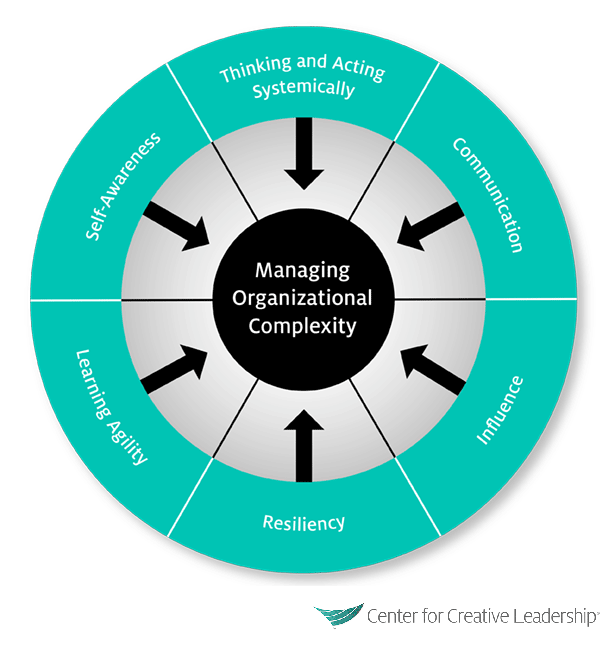If you’re a mid-to-senior level manager — a leader of managers — you lead in what we call “the middle zone.”
You operate up and down the organizational hierarchy, as well as across functions and silos. To achieve results, you must effectively manage people and processes.
Middle-zone roles can also be some of the most difficult. Leaders who live and work in the middle often grapple with competing business priorities, competing vested interests, and competing centers of influence and power.
They feel pressure from above and blame from below. Influencing peers, navigating partnerships, and finessing politics are also on the daily agenda. So, how can you adjust and thrive in the middle zone?
Here are 6 crucial skills to master:
 1. Thinking and Acting Systemically. This requires seeing the big picture, seeing patterns in relationships and processes, and dealing with the uncertainties and trade-offs that are part of the complexities of organizations. Give up the need to constantly please. Trying to please everyone, you may find that you are doing a lot each day, but doubting your ability, impact, and success.
1. Thinking and Acting Systemically. This requires seeing the big picture, seeing patterns in relationships and processes, and dealing with the uncertainties and trade-offs that are part of the complexities of organizations. Give up the need to constantly please. Trying to please everyone, you may find that you are doing a lot each day, but doubting your ability, impact, and success.
According to our Global Portfolio Management Director Michelle Malloy, “This requires self-control and clarity. You need to have understanding and empathy for others — but you can’t let everybody’s ‘stuff’ allow you to lose focus.”
2. Resiliency. “Resiliency is about handling stress, uncertainty and setbacks well — learning to maintain equilibrium under pressure,” Malloy says. “In the Leadership Development Program, we spend a lot of time helping participants find tools for building resiliency for themselves and for others in their organization.”
3. Communication. Communication is a core leadership function, requiring the ability to think with clarity and express ideas and information to a multitude of audiences. Effective communication is also about listening, asking questions, and aligning words and actions.
At work, we need to be skilled communicators in countless relationships — at the organizational level, and sometimes on a global scale. Today’s leaders must also learn to handle the rapid flows of information within the organization and among customers, partners, and other stakeholders and influencers.
4. Influence. This means gaining cooperation to get things done. In today’s flattened or matrixed organizations, position or expertise alone doesn’t give you influence.
You may be met with resistance or compliance, but what you — and your business — need is commitment. It is important to develop a range of influencing styles to help you get different people with different perspectives on board.
5. Learning Agility. Seek opportunities to learn and learn quickly. To be good at anything requires some knowledge, skills, and technical know-how. What separates the remarkable from the good is the ability to adjust, adapt, respond, and be resourceful in the face of change and to learn from experience.
6. Self-Awareness. When you understand your style, motivation, strengths, shortcomings, quirks, and preferences, you are better equipped to make day-to-day decisions, as well as to navigate the big picture for yourself and for your organization.
Together, these 6 leadership competencies give leaders a roadmap for navigating the twists, turns, and complexities of life in the middle zone.

Comments
Post a Comment